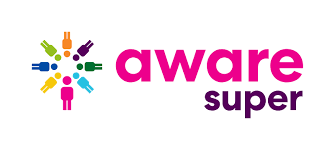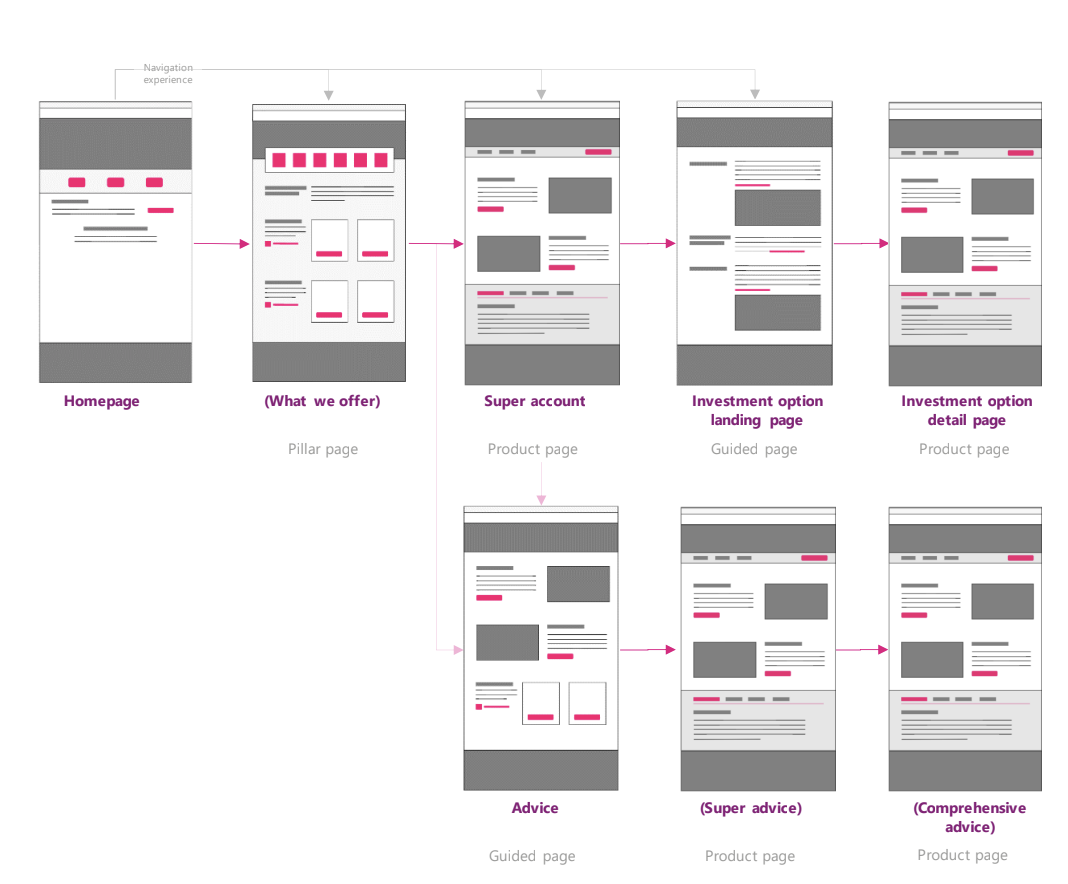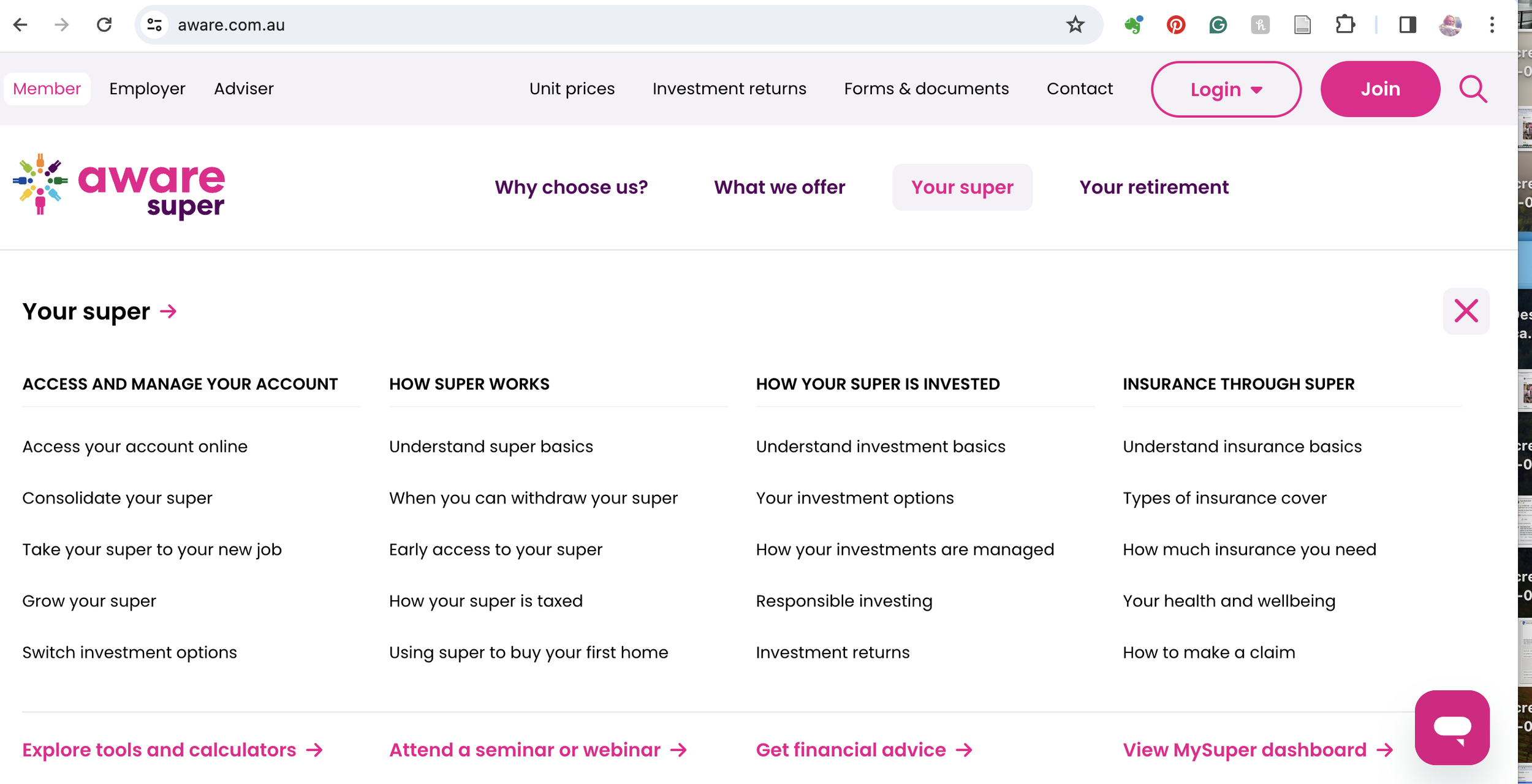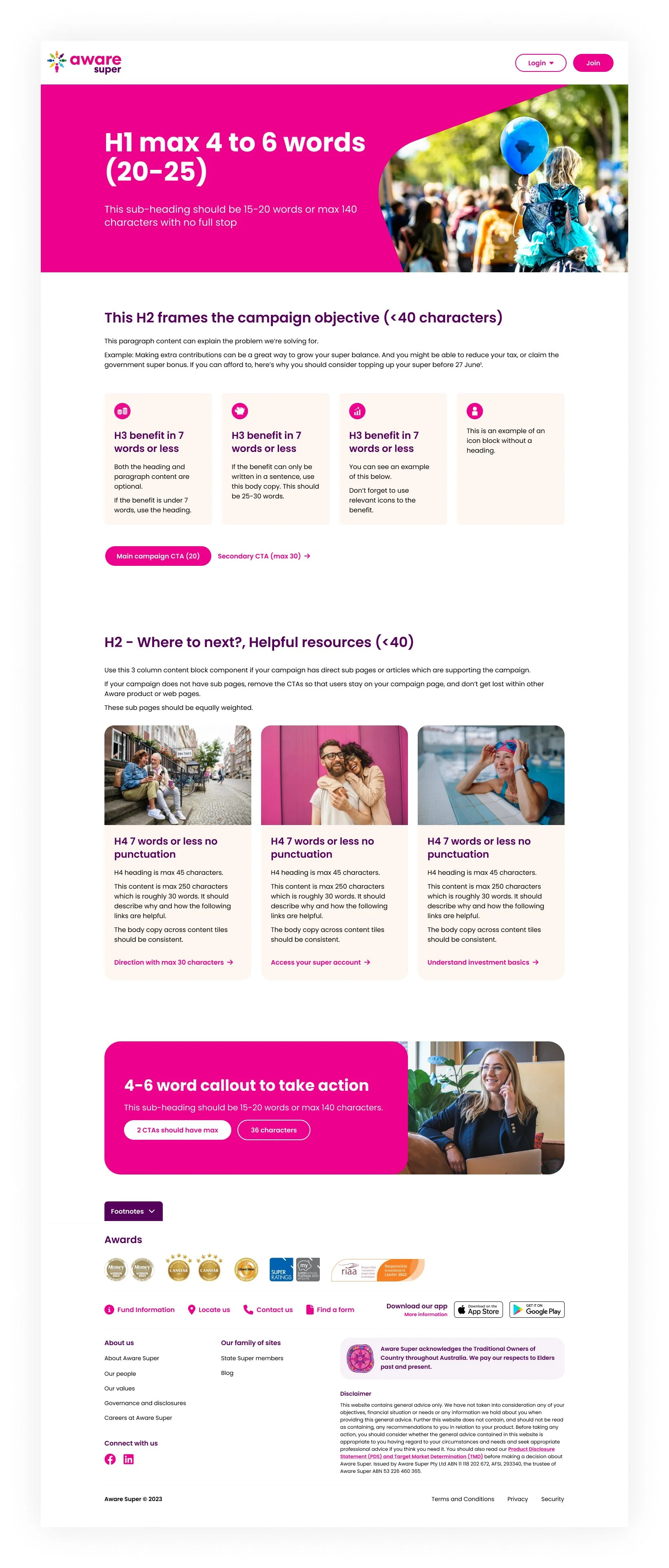Aware Super
New Digital Platform
New CMS - Adobe AEM
Content Strategy
Content Design
User Experience
User Journey Mapping
Aware Super is one of Australia’s largest profit-for-members super funds, with more than 1.1 million members and $160b in funds under management. Aware Super undertook an ambitious digital transformation project, reflecting the organisation’s recognition that the front door to their business is digital. Their ambitions to invest in digital capability and infrastructure has enhanced the employee and member experience, whilst supporting future business growth. Aware Super re-platformed the entire business with a technologically advanced ecosystem operating exclusively in the cloud, utilising advanced data analytics and intelligence to deliver a profoundly simple experience, making something as complex as superannuation easy and accessible for their members.
The Challenge
To create a performance-centric digital solution focused on creating a best-in-class digital front-door for the brand. The brief was to deliver MVP sections taking a prototype-test-iterate approach. Core to the approach was a humanc-centred service design philosophy, developing user stories, mapping journeys and applying a member mental model of a ‘jobs to be done’ framework.
The project included unifying three brands into one and three platforms into one; integrating a new CMS; developing and building a brand new website; content experience design; reducing ungoverned content to 10% of the original starting point; creating a content strategy and principles to govern the website; introduce AA accessibility standards, and standardise the language and reading-level of complex content across into plain English.
Discovery
Framing the design challenge
Using content design methodologies we spent time exploring the problem we wanted to solve. We framed our design challenge as
How we might improve content to answer a member’s job-to-be-done in a way they understand?
This included considerations for inclusivity, accessibility, various financial and general literacy levels.
Different types of research methodologies were used to examine root cause issues and find inspiration for a solution to our challenge.
-Website users (card sort, interview, recording user sessions)
-Content creators (Subject Matter Experts) in depth interviews
-Desktop. Research – learning from experts
-Analogous inspiration
For Content Experience Design Research we used a natural enquiry and task-based approach. We asked open questions, conducted follow-up probing, then more direct questioning. Research was conducted using an InVision mock-up. Functionality and page flows were limited to pages within the section of the site that was being tested. Research was conducted using Zoom. During most sessions, participants shared their screen, so we could observe them as they interacted with the site.
Participants were really positive about the visual and written style of the site. They commented it was simpler, more engaging and very different than what they’re used to seeing from a superannuation company.
“I really like the colours and the style they are using.” P9
“I am very surprised – it is very simple, plain English.” P8
“Overall I am really quite positive about the website. Really approachable. It isn’t at allcluttered.” P4
“They have made this dry topic engaging.” P7
We shared stories about what we learned, clustered our findings into themes and identified key insights from these. This helped us refine our design challenge and helped us to brainstorm ideas for a prototype.
We created a prototype to test the content design and the user experience. This included how we applied branding, including visual elements, language, cadence, and tone of voice considerations.
Following feedback from our testing, we developed:
An implementation plan
Information Architecture
An approach to the design system of how we would design and write content for the end user
An engagement process for SMEs
An MVP deliverable, section by section for the website
A migration strategy for old content
Taxonomy & tagging strategy
Content design principles
Design system
Digital visual reccommendations
a plain English graded literacy recommendation
an approach to working towards WCAG2.1 AA accessibility
User testing
Synthesis & ideation
Content design process
Impact
This digital transformation project changed how Aware Super interacts with their members. The jobs to be done framework has reduced calls into the member experience team as members are able to self-serve and solve their transactional needs.
The next phase in the program is to leverage personalisation across the site.








